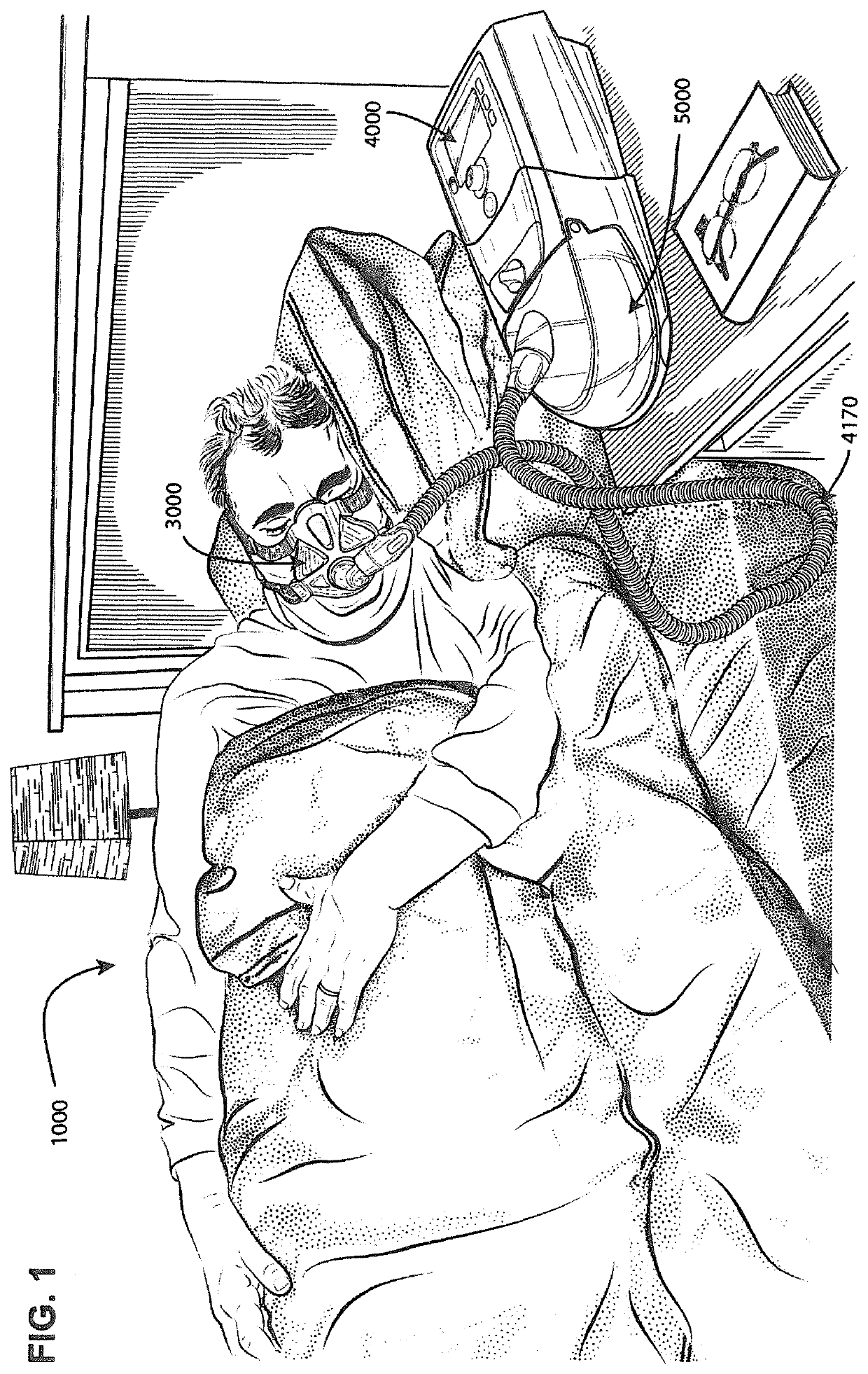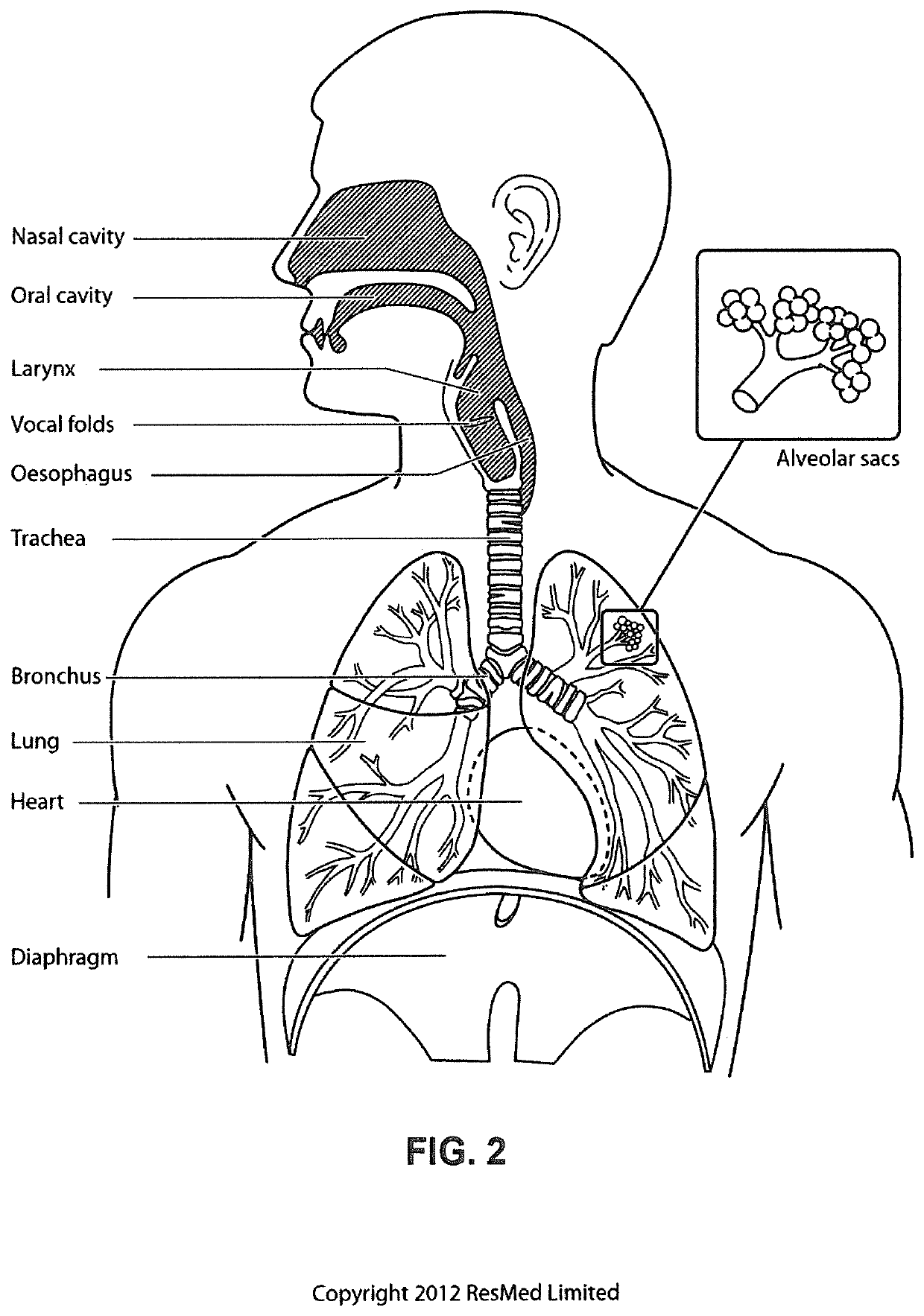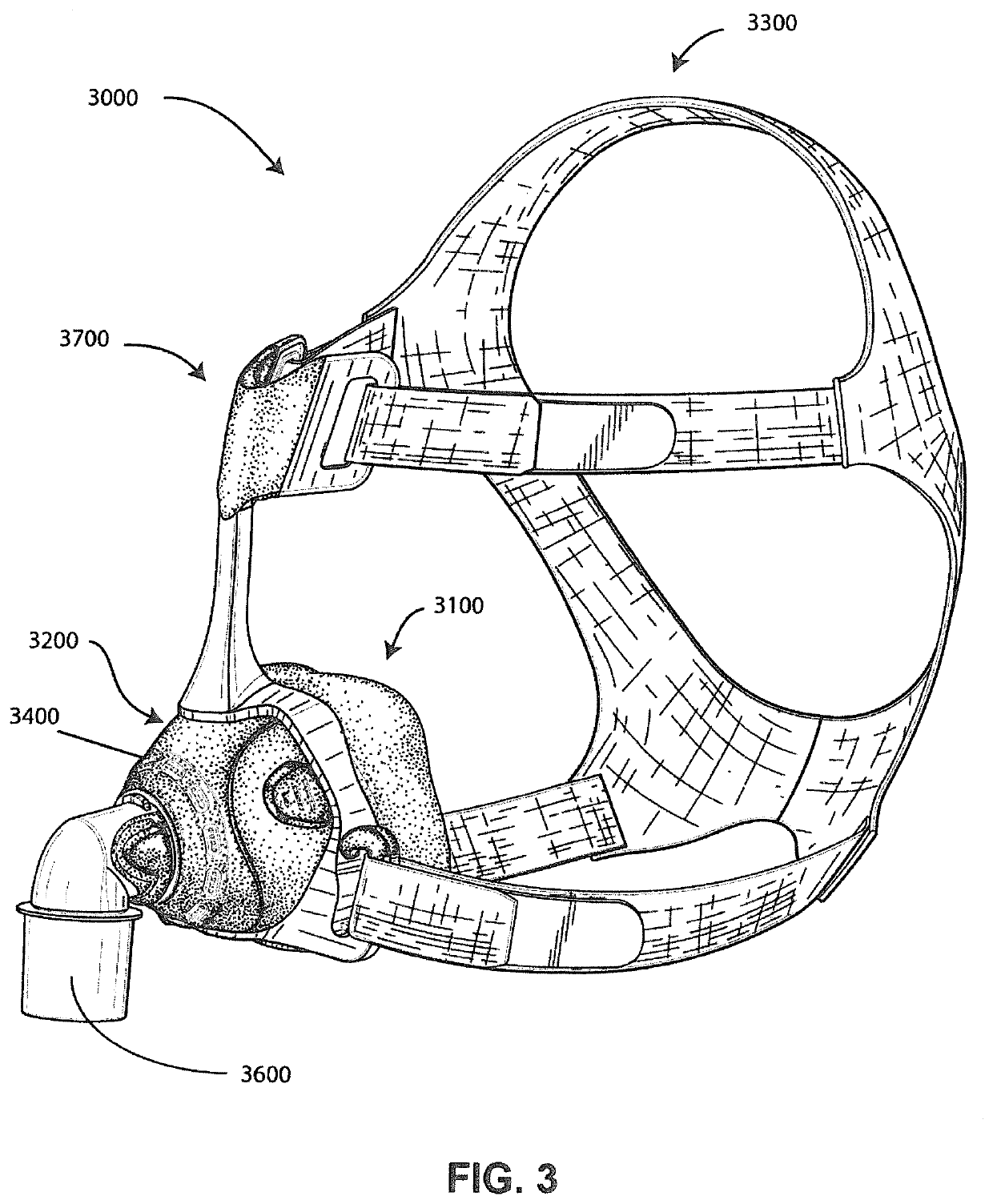Methods and apparatus for detection of disordered breathing
a technology of disordered breathing and methods, applied in the field of methods and apparatus for diagnosing disordered breathing, can solve the problems of csr harm, cardiovascular disease and brain damage, excessive daytime somnolence, etc., and achieve the effects of improving comfort, cost, efficacy, and ease of us
- Summary
- Abstract
- Description
- Claims
- Application Information
AI Technical Summary
Benefits of technology
Problems solved by technology
Method used
Image
Examples
example sdb
[0322 related features for any of the classification processes that may be determined by the processing devices may include any one, more or all of:
[0323]1. cluster_ratio_active feature: This feature may be the proportion of total sleep time consisting of SDB clusters as derived from the active sensing stream (e.g., SONAR sensing). This feature may be derived by a processor as follows:
[0324]a. Generated hypnogram data is evaluated to derive a total sleep time and a sleep-wake mask. The hypnogram as determined by the sleep staging process identifies different stages of sleep (e.g., deep, light, REM) or wake over the course of the recording session. The sleep-wake correction mask is a time series of indicators for the recording session that represents either sleep or wake in a particular time sub-interval of the time series. Thus, the sleep indicator of the mask summarizes any of deep, light or REM, etc. as a sleep interval.
[0325]b. The sleep-wake mask is then evaluated in time relati...
example 13
[0609] The method of any one of EXAMPLES 1 to 12 further comprising generating a cluster flag signal based one or more intensity signals, the cluster flag signal representing a time series identifying presence and absence of SDB modulation.
[0610]EXAMPLE 14. The method of EXAMPLE 13 wherein the cluster flag signal is generated based comparisons between values of the one or more intensity signals and a threshold.
example 15
[0611] The method of EXAMPLE 14 wherein a flag of the cluster flag signal is set to true when a value the one or more intensity signals is greater than a first intensity threshold.
PUM
 Login to View More
Login to View More Abstract
Description
Claims
Application Information
 Login to View More
Login to View More - R&D
- Intellectual Property
- Life Sciences
- Materials
- Tech Scout
- Unparalleled Data Quality
- Higher Quality Content
- 60% Fewer Hallucinations
Browse by: Latest US Patents, China's latest patents, Technical Efficacy Thesaurus, Application Domain, Technology Topic, Popular Technical Reports.
© 2025 PatSnap. All rights reserved.Legal|Privacy policy|Modern Slavery Act Transparency Statement|Sitemap|About US| Contact US: help@patsnap.com



